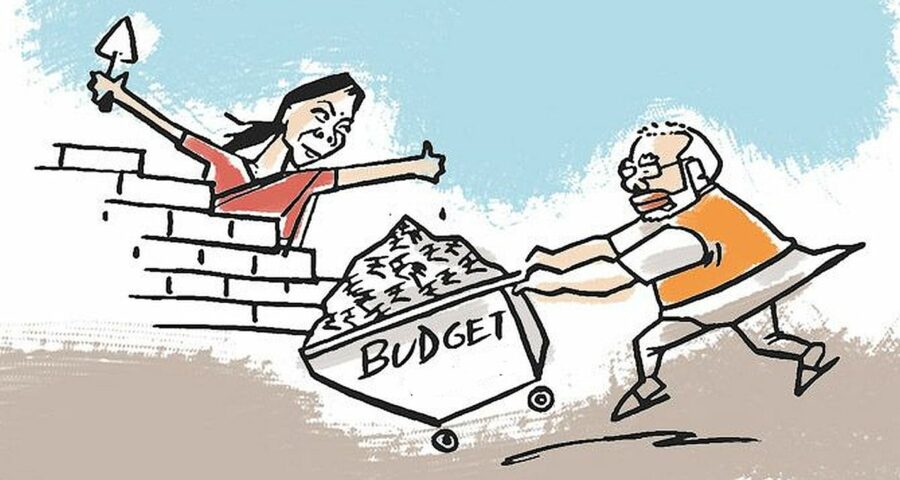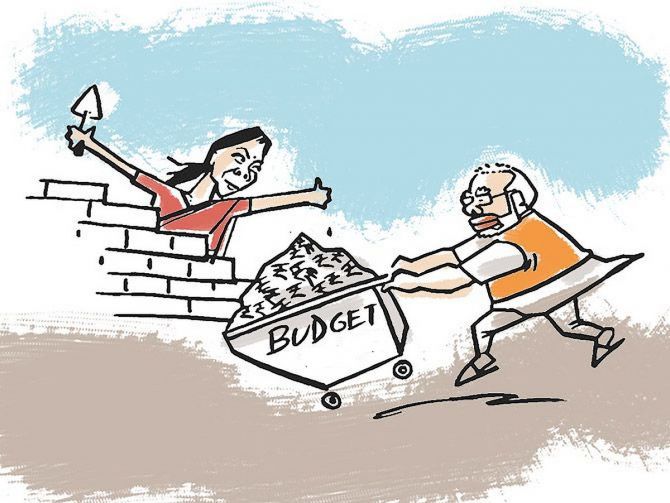‘What do the moves towards protectionism suggest?’
‘That we do not have Aatmavishwas.’
‘If you have self-confidence, confidence in your ability to compete with the best in the world, why do you need protectionism?’
“What we see in the last 5-6 years is a particular reversal of policies of the previous 25 years,” Dr Rakesh Mohan, president and Distinguished Fellow of the Centre for Social and Economic Progress, (formerly Brookings India), and former deputy governor, Reserve Bank of India, tells Shobha Warrier/Rediff.com in the final segment of a three-part interview.
- Part 1: ‘Expect K-shaped, not V-shaped, recovery’
- Part 2: ‘It would be a mistake to allow private sector corporate groups to own banks’
More than two decades ago, when I interviewed Dr Raja Chelliah, he had said that NPAs in the public sector banks needed to be solved immediately. So, this problem of the NPAs has been there for a long time.
Until the 1990s, we didn’t even have a proper classification. We didn’t have capital adequacy requirements.
A huge amount of clean up was done through the 1990s, both in terms of regulation as well as capital requirements.
Yes, by the end of the 1990s, public sector banks had large NPAs, but the balance sheets were then totally cleaned up in the following decade.
By around 2007-2008, if you look at the performance of public sector banks and new private sector banks, they were just about equal.
If a huge improvement on the balance sheet of public sector banks could be done over a decade, the interesting question is, what happened after 2009-2010? I have not seen good answers to this question.
You mean it is possible to clean up the NPA mess even now?
Yes. That’s what I think. I am a votary of the Bad Bank. It depends on how it will be done.
We started our interview on what is needed in the country today to create demand and growth.
The credit growth of the public sector banks, which accounts for 60% of total lending, has been extremely low in the last 6-7 years.
It is partly due to the high NPAs.
Therefore, the good idea is to remove these NPAs from the balance sheets into a Bad Bank and deal with them through the Insolvency Bankruptcy Code.
Meanwhile, once you have cleaned the public sector bank balance sheets, they can start new and they will be less constrained in the current lending that is needed.
Talking of the Budget, Aatmanirbhar Bharat is something that was mentioned many times by the finance minister in her speech.
Is India moving towards protectionism in the name of self-reliance?
If I were to say, we should be moving towards Aatmavishwas Bharat (self-confident India) rather than Aatmanirbhar Bharat. Or, Aatmanirbharta with Aatmavishwas!
Do you feel we are lacking in Aatmavishwas?
What do the moves towards protectionism suggest? That we do not have Aatmavishwas.
If you have self-confidence, confidence in your ability to compete with the best in the world, why do you need protectionism?
I feel, what we see in the last 5-6 years is a particular reversal of policies of the previous 25 years.
From 1991 till 2015-2016, across governments, we have consistently been reducing protection in terms of removal of import restrictions and reduction in import tariffs on an overall basis.
But what has happened in the last 4-5 years is bringing back protective import duties which has continued in this budget too.
That is not going to help us.
I do understand one reason why the demand for protection has arisen during this time.
Most calculations suggest that our real exchange rate has appreciated very significantly in the last 5-6 years.
Therefore, it is not surprising the private industry feels it needs protection.
Suppose the nominal exchange rate depreciated by, say 10%, where is the need for any protection?
And we could then save the PLI (production linked incentive) money for investment in infrastructure.
The exchange rate should be managed in such a fashion that the real exchange rate does not appreciate.
In a globalised world of today, can a country build walls and survive?
One thing we have seen in the last two decades of economic activities is that import protection doesn’t help in promoting growth.
It was a different environment before the mid-1970s when most of the world was on fixed exchange rates.
So, when various kinds of global macroeconomic movements took place, the only way of managing the external factors was to reduce protection.
Now the situation is totally different.
Now, the market largely determines exchange rates around the world.
So, the whole idea of protectionism is inconsistent.
So, will protectionism not hurt the economy?
The one-word answer is, Yes.
Do you think the reforms in the Budget will take the economy back on track?
The question is, back on which track? The important point is what was happening before Covid.
Our growth rate had come down to almost 4% in 2019-2020 and it had been going down in the previous couple of years too.
That’s why I said, what do they mean by back on track? Back on track means, 4%? Or what was in the 2000s when growth was 8%?
On which track do you see the economy going?
I don’t know yet.
One of the major changes that has taken place in the last 10 years is the slowdown in private sector investment.
I have not seen any indication of private investment going up.
That was the key difference we saw in the 2000s.
I do hope that the big corporate tax cut carried out last year will lead to higher private corporate sector investment. Time will tell.
The big difference that took place in the 2000s was that private sector investment went up to around 11% of the GDP compared to around 7% in the 1990s.
So, what is needed are discussions on what is to be done to invigorate private sector investment.
Feature Presentation: Aslam Hunani/Rediff.com
Source: Read Full Article


